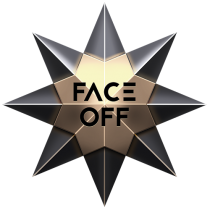My friends and I made a game that was fun and challenging and thought provoking. There is no single best strategy to exploit. There is a decent catch up mechanism. Players are rewarded for smart choices but not forced to quit for mistakes. Perhaps most importantly, it’s fun. There is humor and violence laced throughout the game. I’ve yet to see someone play and not at least chuckle over something we’ve put in.
So now the question shifted from how to me make a great game to how do we publish a great game. This is where my area of expertise (and confidence) ends. So the first thing we did is play test with strangers. We thought it would be a good idea to give them a set of cards and a set of rules and leave ‘em too it.
Yeah that didn’t work at all.
The cards didn’t have final art –more importantly they didn’t have the final set-up/break down icons. So our poor play testers spent two hours combing through our typed-but-not-designed rule book without actually starting to play. One group actually drew a diagram to help them out.
Eventually we stepped in and showed people how to play. Then things got better. Live and learn.
The biggest thing we learned from our first public play test was we needed art. We hired some great artists. Some local, some abroad, and some really far abroad. We hired graphic designers. And then we started to argue.
For the first time our triumvirate had some fairly serious disagreements –particularly about card layout and how much iconography to include on each card. This speaks to personal play styles. Things like how to like to hold cards in your hand. Do you fan them? Do you flip through them? Do you stack them? The answers affect what information you want where.
Then there is style. I like oil paintings. My partner likes water colors. My other partner likes anime….
The discussions were long. And sometimes bitter.
Every group is going to be different. Every argument is going to be unique. The bottom line is this: when you assemble your team to help you build your game, you need a mediator. Someone who is going to set aside emotion and bridge gaps. We have one is our group and we make him work hard. All the time.
And that brings us to the present. We’re in the midst of marketing Face Off, preparing for Gen Con, and developing other games for the future.
I can’t say for certain if any of this is going to work. But it seems to be going pretty well so far.
Stay tuned to this blog and our social media stuffs and we’ll keep you posted.


